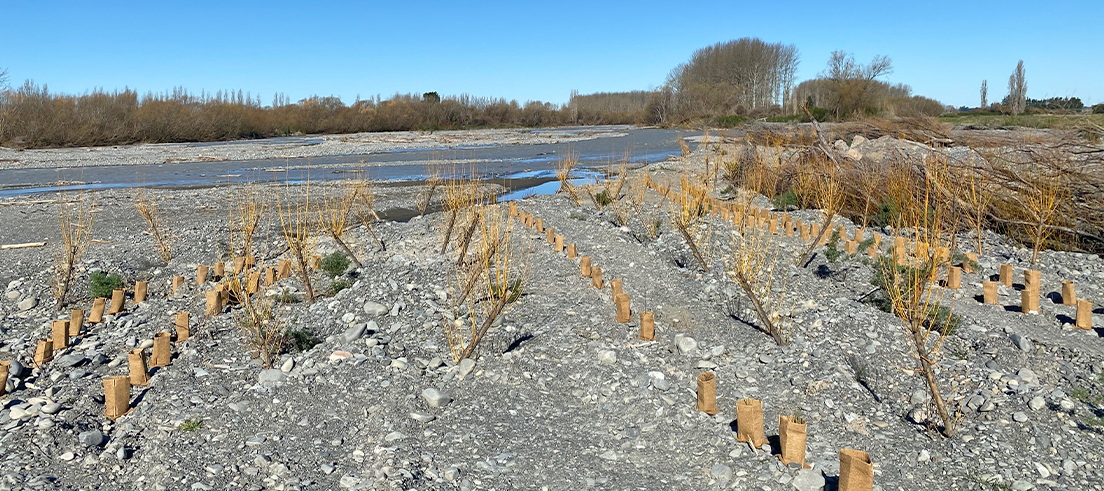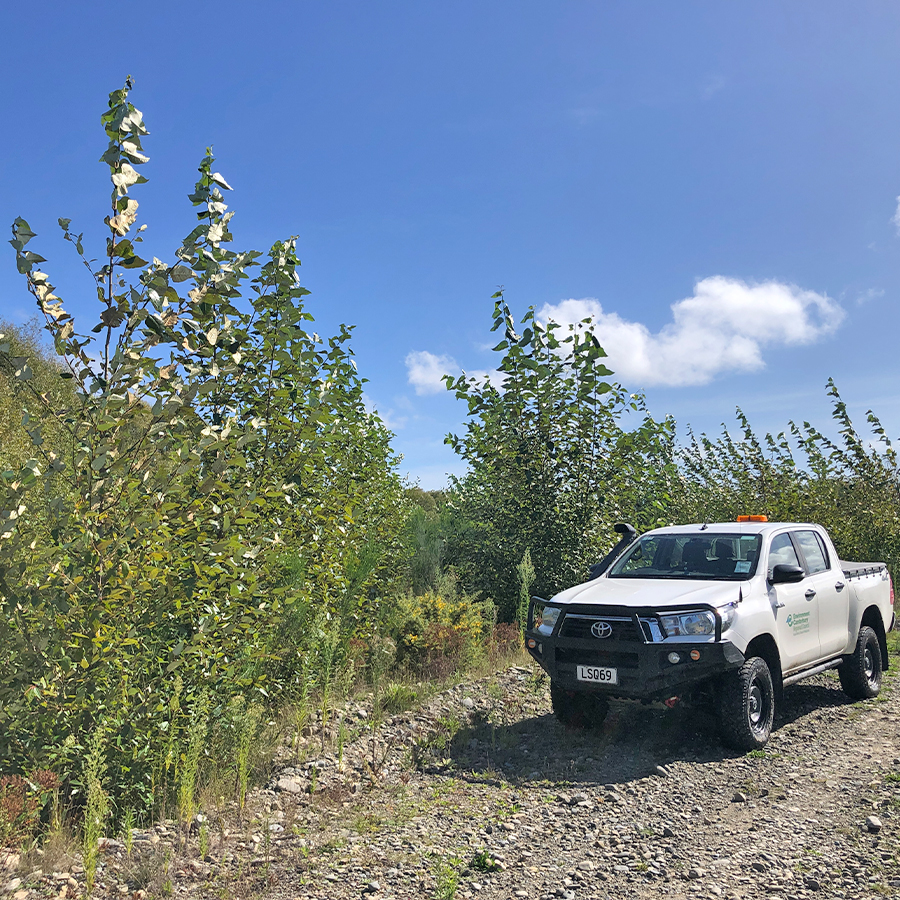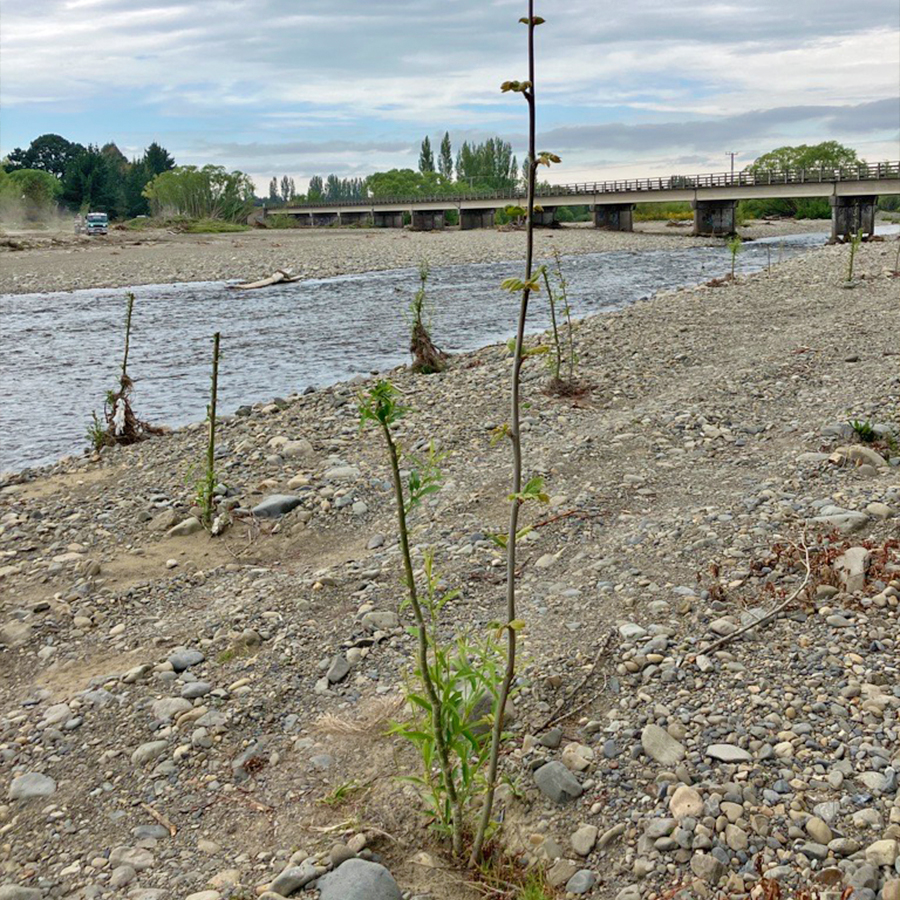
Bumper willow planting season protects from flooding
Across South Canterbury rivers, close to 50,000 willows have been planted in one of our biggest seasons of pole planting ever undertaken, thanks to operational funding/rates, partner contributions, and central government funding.
Poles are young tree stems, older and more robust than seedlings. When mature, these willow trees will play an important role in our flood protection, helping strengthen our region’s rivers and increasing safety and resilience for our river communities in the face of climate change.
Benefits of planting willows
Willows (Salix spp.) were first introduced to New Zealand during the mid-1800s when early settlers discovered they could strengthen riverbanks that had been stripped of their native vegetation.
Fast growing, even in the most challenging conditions, their dense root structures form a fibrous mat that protects bare soil from erosion and stabilises the riverbank, river works supervisor Ben Macleod explained.
"Willows act as a buffer, slowing water flow and protecting the river edge from the full brunt of the current," Ben said.
"They remain one of the most reliable options for stabilising banks in erosion-prone areas or where flooding poses a significant threat."
The modern varieties we use are sterile cultivars that have ground-stabilising benefits, without the risk of habitat loss due to invasive spread.
In the wrong place, however, willows can be a flood risk, taking up space in the active channel of a river. So, while we are planting willows in some places, in other places we are removing pest species like crack willow, which can spread rapidly where it’s not wanted.
Biggest pole planting season
While a normal pole planting season might see 10-15,000 poles planted, this year’s 50,000 has well and truly surpassed that, as we play catch up after significant flooding events in recent years.
"This is the biggest year we’ve had in the 12 years I’ve been at the regional council," Ben said.
"We had one year where we did 33,000 and this has blown that out of the water, not just in terms of numbers but also logistically. Along with our own people, at one point we had 6-7 local contractors working across all our sites. It’s been an amazing team effort from start to finish."
The local depot teams tasked with pole planting have been working in tandem with the regionwide planting and berm transition team, who have identified areas in between the poles that are suitable for planting natives.
This additional planting in and around the river margins further bolsters our flood protection capabilities, as the plantings provide a buffer that both slows floodwaters and prevents erosion.
Willow-based flood protection techniques
It’s not just while they are planted on river margins that we reap the flood protection rewards of willows, with several clever methods using cut willows also playing an important role.
Anchored tree protection involves cut willows being anchored to the riverbank with wire rope and concrete blocks, drums or railway irons, depending on the location of the site.
"The trees continue to grow and form a stable mass of plant material, which helps to stabilise the bank and prevent further erosion and slumping," Ben said.
Layering involves felling willows but keeping them attached to the stump.
This allows it to put down roots along the length of the felled willow, which stabilises the bank, catches silt and debris to build the bank back up again and also creates areas of still water to slow down the erosion.
"Willows are one of the best and most cost-effective forms of flood protection we have."
Seeking more investment in flood protection infrastructure
Climate change-induced events across the country have highlighted the urgent need to increase investment in flood protection infrastructure, so communities are protected now and in the future.
The work is an example of how co-investment from central government can help us accelerate important flood protection work that would otherwise take decades to fund through rates alone, providing better protection to communities from the effects of climate change.
Read about why co-investment is critical to the future of flood protection.
What is increasingly clear is that a shared investment today means lower overall recovery costs and better protection for the environment for current and future generations.


